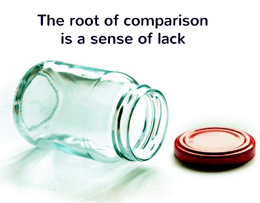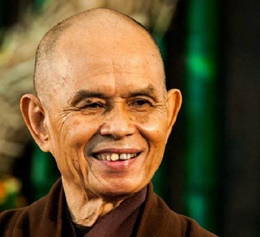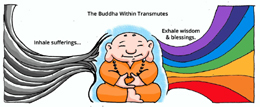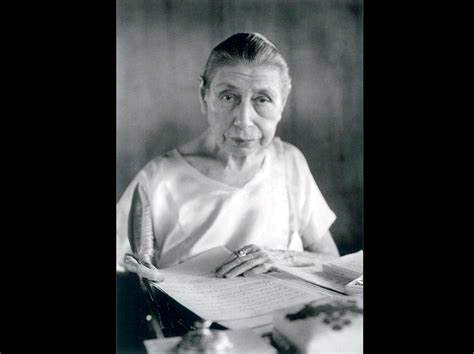Suffering
The Art of Suffering Well
Abstract
At the present stage of human evolution, somehow the way we are, we do suffer, before we can transcend the suffering and let go of the need for suffering in order to grow and expand in our consciousness. While the suffering is manifesting itself, I have a choice. While the ground beneath me is ripped apart from as I had known it, I have a choice. I have a choice to use the suffering well, or to let it push me into plunges of darkness with no sight of light. I have a choice to let go of my stubbornness to be obsessed by the limited sense of self, or to connect deeply with my suffering, to embrace it, and hence embrace the suffering of the whole of existence. What I choose, decides what transpires from the raw material of the seeming suffering.
“If you know how to suffer well, you suffer much less.” — Thich Naht Hahn.
Why does suffering exist?
Our human adventure begins from darkness towards light, from doubts and confusion towards increasing clarity and wisdom. And as Sri Aurobindo says: ‘from the Desire-soul to the True soul’. The desiring self is a clingy one. It is sticky. It sticks to people, it sticks to ideas, it sticks to thoughts, stories in the head, feelings, opinions and such like. Anything that I stick to has the power of making me suffer. My stickiness is the one that makes me suffer. And because we start the journey mostly from the desire-soul, we undergo some or more suffering, before we can do without it. In fact, it is only when I suffer that I realise or become conscious of my stickiness. Before that, all is hunky dory! I am unconscious of my desire-soul, or rather unaware that I am living identified with the desire-soul.
“This craving life-force or desire-soul in us has to be accepted at first, but only in order that it may be transformed (1).”
“Division, ego, the imperfect consciousness and groping and struggle of a separate self-affirmation are the effective cause of the suffering and ignorance of this world. Once consciousnesses separated from the One Consciousness, they fell inevitably into ignorance and the last result of ignorance was Inconscience; from a dark immense Inconscient this material world arises and out of it a soul that by evolution is struggling into consciousness, attracted towards the hidden Light, ascending but still blindly towards the lost Divinity from which it came (2).”
“So too we have a double psychic entity in us, the surface desire-soul which works in our vital cravings, our emotions, aesthetic faculty and mental seeking for power, knowledge and happiness, and a subliminal psychic entity, a pure power of light, love, joy and refined essence of being which is our true soul behind the outer form of psychic existence we so often dignify by the name. It is when some reflection of this larger and purer psychic entity comes to the surface that we say of a man, he has a soul, and when it is absent in his outward psychic life that we say of him, he has no soul (3).”
In Savitri, Sri Aurobindo elaborates deeply and profoundly on the problem of pain:
“Thence rose the need of a dark intruding god,
The world’s dread teacher, the creator, pain.
Where Ignorance is, there suffering too must come;
Thy grief is a cry of darkness to the Light;
Pain was the first-born of the Inconscience
Which was thy body’s dumb original base… (4)”
“By pain and joy, the bright and tenebrous twins,
The inanimate world perceived its sentient soul,
Else had the Inconscient never suffered change.
Pain is the hammer of the Gods to break
A dead resistance in the mortal’s heart,
His slow inertia as of living stone.
If the heart were not forced to want and weep,
His soul would have lain down content, at ease,
And never thought to exceed the human start
And never learned to climb towards the Sun.
This earth is full of labour, packed with pain;
Throes of an endless birth coerce her still;
The centuries end, the ages vainly pass
And yet the Godhead in her is not born (5).”
“He walks by his own choice into Hell’s trap;
This mortal creature is his own worst foe (6).”
Wanting to make a stable ground in the fleeting
As I am unconsciously identified with a limited sense of self, the ego-self, I am always full of a sense of lack, an incompletion within, like something is missing, and I need something else to make me full, stable, solid. So, in this unconsciousness and in this ignorant identification with the sense of limited self, I desperately look for stable ground. How can I make a stable ground? A person? A relationship? A workplace? A sense of identity? A particular ideology? Something, something which gives me grounding that I am. Something that gives me a sense of self. And for that I mostly look outward, through the doors of my sense perceptions.
Things may go well for some time, and as long as they are going well according to me, I don’t bother to care much about suffering or the art of suffering well, or finding who I truly am! But the Divine is compassionate, merciful, and hence, things don’t always remain seeming hunky dory according to my wishes and fancies. Things change, people change, people go away, jobs are lost, and hence, the ground, my stable ground, gets ripped apart from beneath my feet. And it makes me suffer, as I had wanted stability in the fleeting.
Now, we have a golden opportunity. To be completely okay with groundlessness, the infinity, or in other words we can say, to rely solely on the Divine, on consciousness/pristine awareness (as called in Buddhism), our groundless ground. Because if things really go decently well according to my standards, who cares to change or move towards the Divine? Who cares to transcend the limited sense of self? No one! It is only when I suffer, when I truly lose my ground, that suffering enters my life, and to seek for a sense of respite, I am willing to go within, and know the suffering to its roots, and hence have the possibility for a great adventure, to identify myself with the true consciousness!
Choosing to suffer well
The greater the suffering, or let us put it this way — the greater the unease or the greater the sensitivity to the unease created by suffering — the greater is the possibility, the thrust towards a greater discovery! So, we see that suffering is not the problem, it is just that I have to learn how to suffer well. How to transmute suffering into something beautiful, something deep, touching the depths of myself and others.
The great master and teacher, Thich Naht Hahn has shared beautiful words of teaching on how to suffer well. To paraphrase him, if we can mindfully be conscious of the suffering, if a part of my being is always rooted in the present moment, mind in the body, then whatever pain arises, whatever suffering arises can be met fully. And the energy of mindfulness creates a greater vibration which embraces the energy of suffering, and is able to dissolve it in the loving embrace. The Mother also talks about the power of a greater vibration created by focused and precise consciousness, and how it has the power and precision that cuts through confusion and falsehood (7).
The Mother guides us, how to use the suffering well, when it is there:
“If at any time a deep sorrow, a searing doubt or an intense pain overwhelms you and drives you to despair, there is an infallible way to regain calm and peace. In the depths of our being there shines a light whose brilliance is equalled only by its purity; a light, a living and conscious portion of a universal godhead who animates and nourishes and illumines Matter, a powerful and unfailing guide for those who are willing to heed his law, a helper full of solace and loving forbearance towards all who aspire to see and hear and obey him. No sincere and lasting aspiration towards him can be in vain; no strong and respectful trust can be disappointed, no expectation ever deceived…
Suffering is not something inevitable or even desirable, but when it comes to us, how helpful it can be!
Each time we feel that our heart is breaking, a deeper door opens within us, revealing new horizons, ever richer in hidden treasures, whose golden influx brings once more a new and intenser life to the organism on the brink of destruction.
And when, by these successive descents, we reach the veil that reveals thee as it is lifted, O Lord, who can describe the intensity of Life that penetrates the whole being, the radiance of the Light that floods it, the sublimity of the Love that transforms it for ever (8)!”
Making good use of our suffering — practising Tong-len
Tong-len (taking and giving) is a Buddhist technique which makes us use our own suffering for a greater good, and also results in a shift in our own inner state. There are many variations of Tong-len possible, and below are shared a few of them. Many contemporary teachers like Pema Chodron, Jetsunma Tenzin Palmo, Mingyur Rinpoche have talked on how to practise Tong-len and there is no dearth of material nowadays, owing to the internet revolution. I am sharing a few that I practise myself, and have benefitted from extensively.
Variation 1
If I find myself in a confused state of being — in grief, or sadness or despair or in the throes of suffocating ego-consciousness, in a conflicting partnership/relationship, pain of following the dictates of ill-will, and I become conscious of the mental, emotional and physical unease in me, here is my chance. I deeply get in touch with my pain or suffering, knowing that it is there. Yes, it is there. I see it. And then, I realise, now I know the pain of billions of us, who go through such pain, in such a situation. Pain of losing a loved one, pain of living in ego-consciousness, pain of a breaking relationship, pain of inner strife, pain of physical separation from a loved one, or other matters of human life. I tell myself inwardly — Now I know the pain. And hence, with the in-breath, I inhale all the darkness, and pain of so many of us in a similar condition, I inhale all that into the centre of my heart, and with the out-breath, I radiate joy, simplicity and contentment for all.
Variation 2
If I find myself in a situation or an interaction, or meeting with several people, where I see conflict, suffering, pain and the misery of ego-consciousness manifesting itself, I silently inhale all the darkness as a dark cloud or smoke with the in-breath into the centre of my heart, and with the out-breath, I radiate — may all of us be relieved from the grips of the ego consciousness, and may we all be expansive, wide with our hearts open.
Many of us may feel a resistance in doing Tong-len, which is okay, since the ego or the sense of limited self will always be afraid of trying to protect itself from all that is seemingly damaging. But this is our chance and if in spite of the resistance from the ego- consciousness, if I have a pure intention of benefiting myself and others, then we can allow ourselves to practise this, so as to let all ill-will, all impurities, burn away with the purifying power of this practice; and we connect ourselves to a higher power beyond our limited imaginations.
In the Mother’s Prayers and Meditations, we have a hint of the Mother practising something like Tong-len:
“O Lord, I would like to be so ardent a love that all lonelinesses may be filled up by it and all sorrows soothed.
O Lord, I cry unto Thee: Make me a burning brazier which consumes all suffering and transforms it into joyous light irradiating the hearts of all! . . .
Grant my prayer: Transform me into a brazier of pure love and boundless compassion (9).”
Let us all become a brazier of pure love and boundless compassion. Amen.
References
1. Sri Aurobindo. Birth Centenary Library, Volume 20. Pondicherry: Sri Aurobindo Ashram Trust; 1970, p. 77.
2. Sri Aurobindo. The Complete Works of Sri Aurobindo, Volume 28. Pondicherry: Sri Aurobindo Ashram Trust; 2012, p.256
3. Sri Aurobindo. CWSA, Volume 21; 2005, p. 234.
4. Sri Aurobindo. CWSA, Volume 33; 1997, p.443
5. Ibid., pp. 443-44.
6. Ibid., p.440.
7. The Mother. Collected Works, Volume 9. Cent ed. Pondicherry: Sri Aurobindo Ashram Trust; 1977, p. 287.
8. The Mother. Collected Works, Volume 2 ; 1978, pp. 19-20.
9. The Mother. Collected Works, Volume 1; 1979, p. 65.
Dr. Monica Gulati, a learner and a seeker, is based in Gurgaon, India and an editor of NAMAH.
Share with us (Comments,contributions,opinions)
When reproducing this feature, please credit NAMAH,and give the byline. Please send us cuttings.






